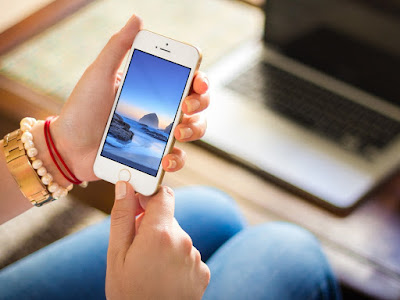Competition
in the digital tech and personal electronics space has been heating up
in the last five years. The old iPhone v/s Android debate has been left
by the wayside – today, it’s a race to the finish line as companies
invest heavily in new R&D. But here, too, Apple seems to be winning
the race at the moment – because it is not invested in the small stuff.
In fact, after driverless cars and streaming television, Apple is
working on Augmented Reality (AR).
In a nutshell, AR overlays games, videos and images in the real world – sort of like the virtual reality Pikachu craze that gripped the world in 2016. But Apple envisions AR on a much grander level, while making it an indelible part of our lives. CEO Tim Cook believes that Apple can take AR to a level where it becomes as normal for users as eating three meals a day.
To this end, Apple is rumoured to have assembled a team comprising the best talents in hardware and software, and the bright sparks that have previously worked on the HoloLens and Oculus virtual reality headsets. The company has also acquired a few firms that specialise in 3D gaming and virtual reality software.
So it seems like big things will happen at Apple in the coming days – but this could also be because AR is a phenomenon that might eventually replace our smartphones, opine forecasters. Apple is well aware that in the next decade, AR hardware could replace most of its product suite, starting with the iPhone. But technical expertise on how to build small and sturdy products is on the company’s side. The current AR hardware is either flimsily built or too bulky for regular use. So Apple has a window of opportunity for creating slim, powerful AR hardware (such as AR glasses). It is a distinct possibility that you could head to the Apple service centre to get your iPhone and AR glasses looked at and synced!
Another way that Apple can skip past competition in this space is by offering syncing between its AR hardware and the iPhones or iPads, for example. This functionality is already in use with the iWatch. The most obvious AR hardware that Apple is currently developing – but which the company has denied thus far – is AR glasses which can sync with the iPhones. However, the AR glasses would come with its own tech, a higher battery life and a range of exciting new apps and games that will keep users interested.
If any company can pull off a combination of developing wearable tech that actually works, social and payments, it is Apple. It remains to be seen how deep this project goes, and to what extent AR gets included in Apple’s product suite in the days to come.
In a nutshell, AR overlays games, videos and images in the real world – sort of like the virtual reality Pikachu craze that gripped the world in 2016. But Apple envisions AR on a much grander level, while making it an indelible part of our lives. CEO Tim Cook believes that Apple can take AR to a level where it becomes as normal for users as eating three meals a day.
To this end, Apple is rumoured to have assembled a team comprising the best talents in hardware and software, and the bright sparks that have previously worked on the HoloLens and Oculus virtual reality headsets. The company has also acquired a few firms that specialise in 3D gaming and virtual reality software.
So it seems like big things will happen at Apple in the coming days – but this could also be because AR is a phenomenon that might eventually replace our smartphones, opine forecasters. Apple is well aware that in the next decade, AR hardware could replace most of its product suite, starting with the iPhone. But technical expertise on how to build small and sturdy products is on the company’s side. The current AR hardware is either flimsily built or too bulky for regular use. So Apple has a window of opportunity for creating slim, powerful AR hardware (such as AR glasses). It is a distinct possibility that you could head to the Apple service centre to get your iPhone and AR glasses looked at and synced!
Another way that Apple can skip past competition in this space is by offering syncing between its AR hardware and the iPhones or iPads, for example. This functionality is already in use with the iWatch. The most obvious AR hardware that Apple is currently developing – but which the company has denied thus far – is AR glasses which can sync with the iPhones. However, the AR glasses would come with its own tech, a higher battery life and a range of exciting new apps and games that will keep users interested.
If any company can pull off a combination of developing wearable tech that actually works, social and payments, it is Apple. It remains to be seen how deep this project goes, and to what extent AR gets included in Apple’s product suite in the days to come.

No comments:
Post a Comment